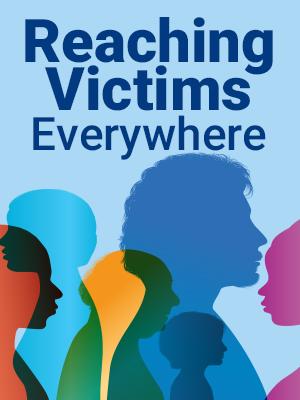Archival Notice
This is an archive page that is no longer being updated. It may contain outdated information and links may no longer function as originally intended.
Victims of the Addiction Crisis
According to the Centers for Disease Control and Prevention Adverse Childhood Experiences Study, parental substance abuse is one adverse childhood experience associated with a range of negative outcomes later in life. Children and youth who are exposed to parental substance abuse may be at greater risk for crime victimization during their lifetimes, including child abuse and neglect, human trafficking, intimate partner violence, and more.
In FY 2018, OVC launched a response effort to address the urgent gaps in crime victim services related to the opioid epidemic and to establish new or expand upon existing programs to provide services to children and youth who are crime victims as a result of the opioid crisis. A young victim of the addiction crisis is—
- a child or youth, from newborn to 18 years old;
- a victim of any type of crime (e.g., child abuse or neglect, physical or sexual assault, domestic or family violence, DUI or DWI); and
- a victim impacted by the current addiction crisis (i.e., opioids, methamphetamines, other misused substances, polysubstance abuse).
OVC awarded a total of $29.8 million to 41 sites and a training and technical assistance (TTA) provider in FY 2018, and another $12.3 million to 18 sites in FY 2019. In FY 2020, OVC extended the scope of this project to children and youth who are crime victims as a result of the addiction crisis, recognizing the addiction crisis was not limited to opioids. OVC awarded a total of $13.3 million in program grants to 17 sites and the same technical assistance provider. Examples of community responses that this program supports include school-based programs, foster care and child welfare systems, counseling and assistance programs, child advocacy programs, court-appointed special advocates, mentoring and tutoring programs, civil legal services, and faith-based programs.
Between FY 2019 and FY 2020, a total of 9,564 victims were served through direct services. Child physical abuse, domestic and/or family violence, and child sexual abuse were the primary victimization types seen by these programs. Services provided include individual advocacy (11,747 occurrences), crisis intervention (10,610 occurrences), individual counseling (10,519 occurrences), and other therapies (10,242 occurrences). Grant programs involved partners in their initiatives, with an average of 463 partners involved per quarter and an average of 296 partners funded per quarter. In FYs 2019 and 2020, victim service providers also conducted 631 trainings for 13,835 individuals. The most common participants included mental health providers, community-based organizations, and educators/youth service providers. Participants completed 2,704 post-training surveys, with 88 percent reporting overall satisfaction, 70 percent reporting an increase in knowledge, and 76 percent planning to implement knowledge.
The TTA provider conducted 15 trainings that reached 819 individuals. Participants included community-based organizations, mental health providers, and substance abuse treatment providers. TTA recipients completed 206 post-training surveys, with 90 percent reporting overall satisfaction. Additionally, the TTA provider met with each grantee monthly to conduct needs assessments and assist in the development of their programming, partnerships, collaboration, and outreach.
Community-Driven Responses to the Opioid Crisis
Throughout the Nation, communities are struggling to respond to increasing rates of substance use and overdose death—particularly from opioids—and the associated social and economic consequences, including crime victimization. Tribes are not excluded from this calamity. Many officials and social service providers who work with tribal communities have expressed being overwhelmed and unequipped to respond to the volume and severity of situations associated with the public health emergency presented by the addiction crisis.
To assist with this effort, OVC has awarded nine tribes more than $6 million to address the urgent gap in crime victim services related to the addiction crisis and to expand on existing programs or establish new programs to provide services to children and youth who are victimized as a result of the crisis.
Advancing the Use of Technology To Assist Victims of Crime
In FY 2019 and FY 2020, under the Advancing the Use of Technology to Assist Victims of Crime initiative, OVC awarded $1.2 million to the National Alliance for Drug Endangered Children to develop a mobile phone app to improve access to information and services for drug-endangered children in four diverse communities that can be replicated nationally. The app will include information about the impacts of substance use on children, and will provide referrals to national and local services that address their trauma.




